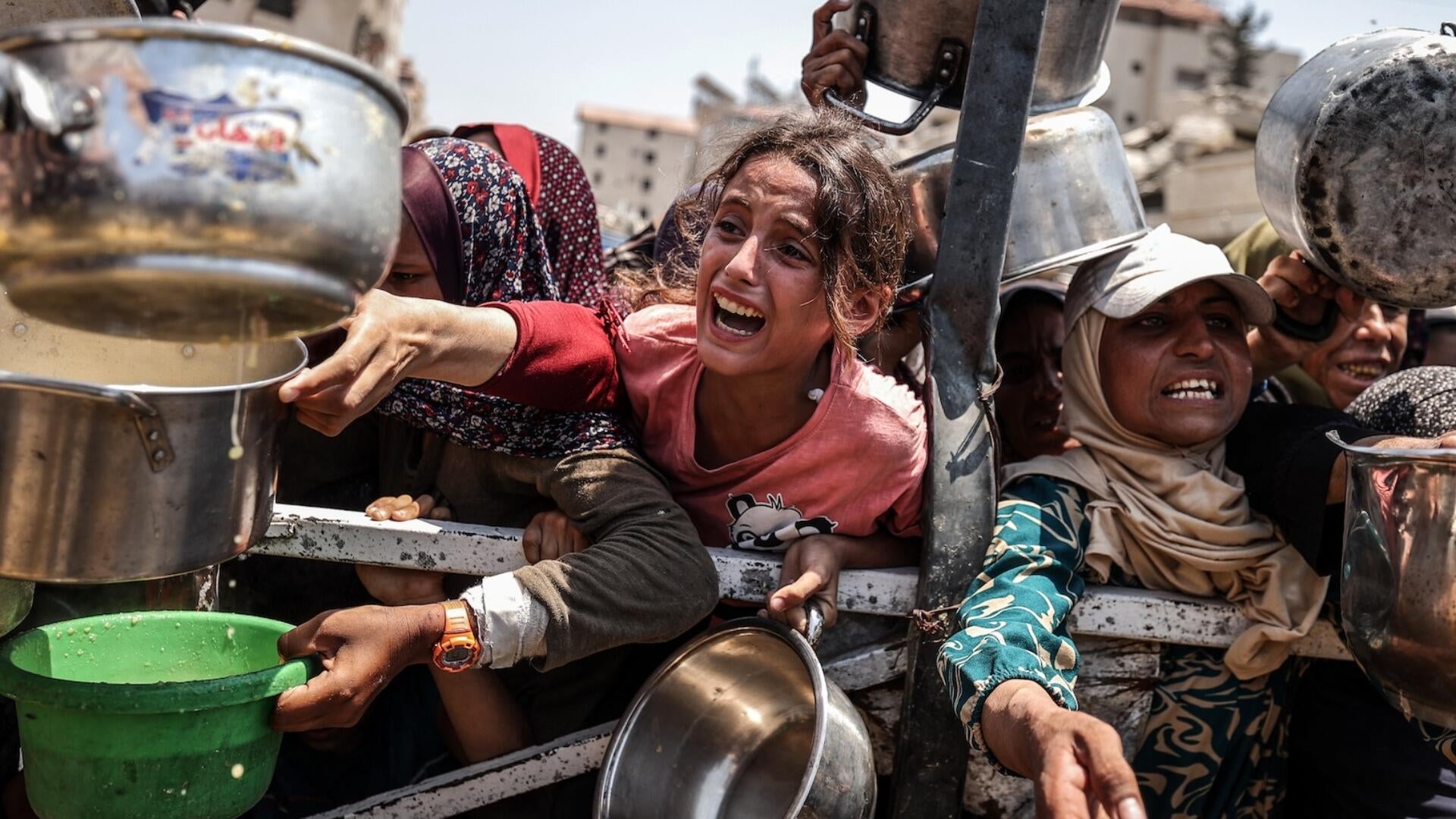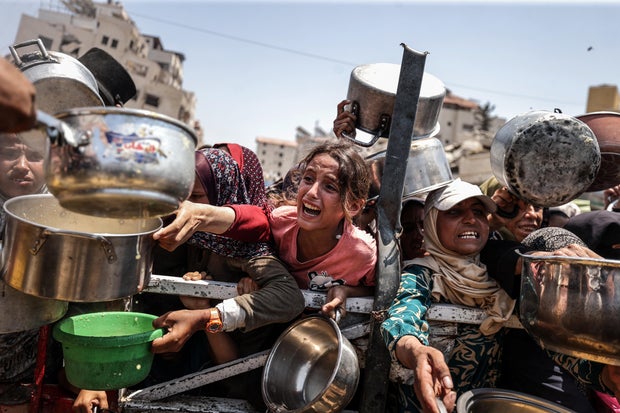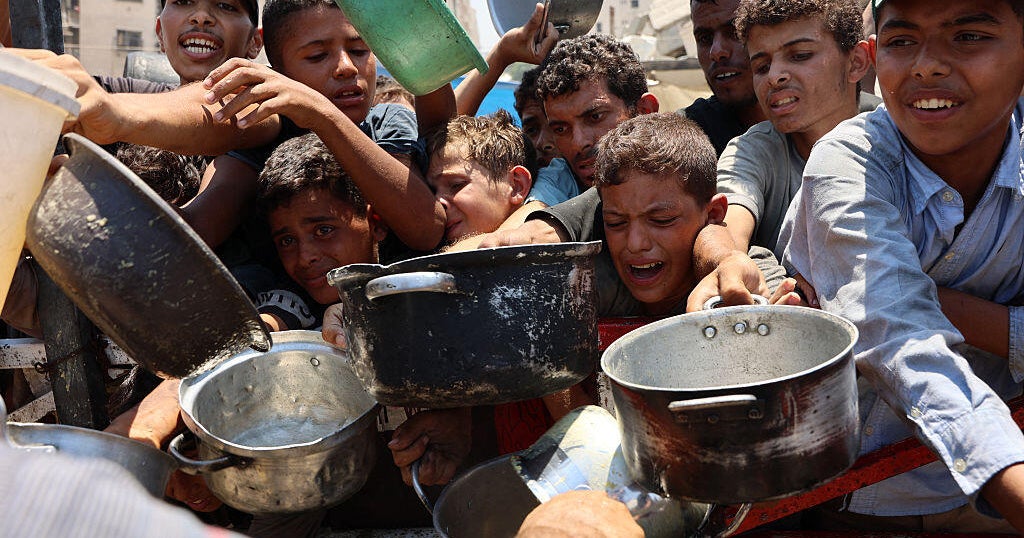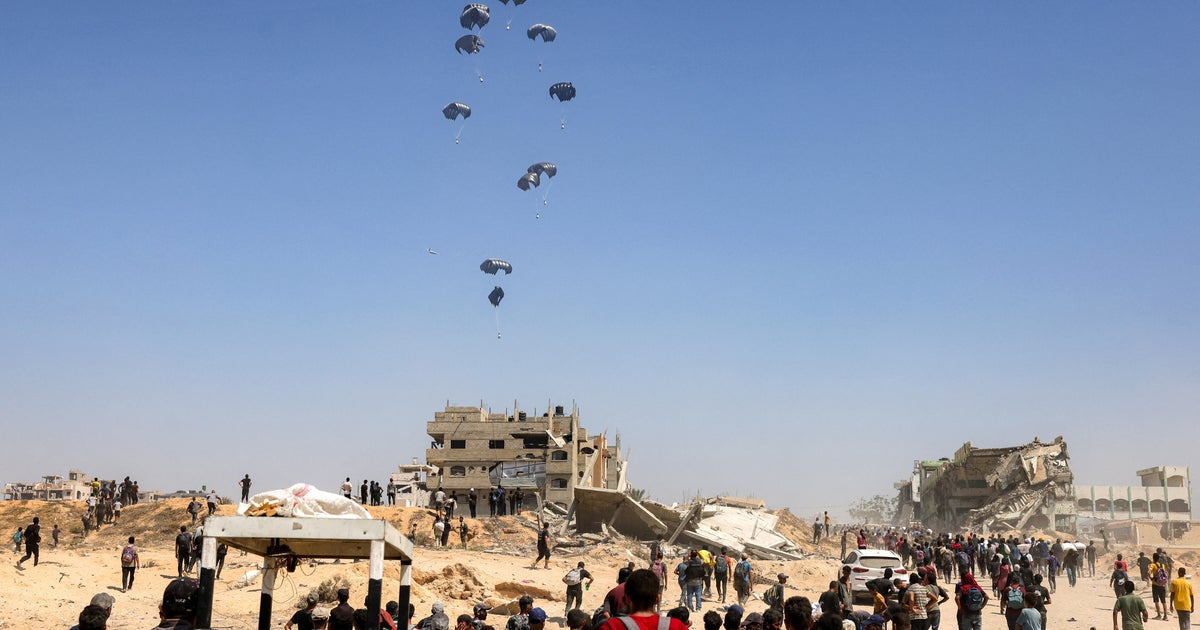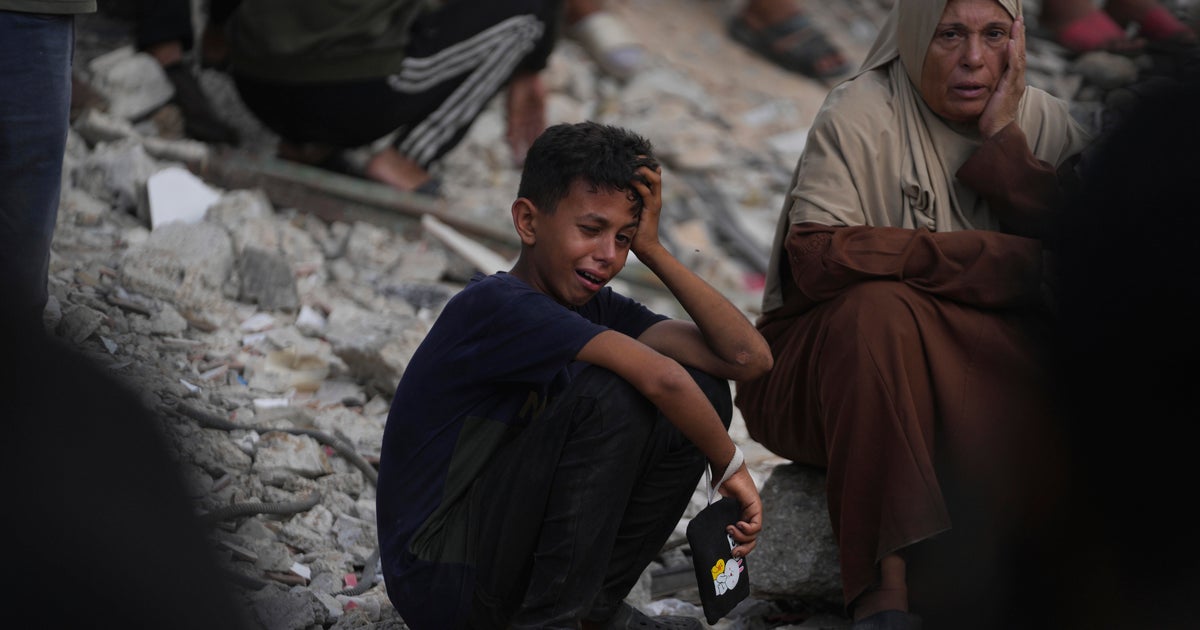"Worst-case scenario of famine unfolding" in Gaza Strip, food security experts say
The "worst-case scenario of famine is currently playing out in the Gaza Strip," the leading international authority on food crises said in a , predicting "widespread death" without immediate action.
The alert, still short of a formal famine declaration, follows an outcry over images of emaciated children in Gaza and reports of dozens of hunger-related deaths after nearly 22 months of war.
The international pressure led Israel over the weekend to announce measures, including daily humanitarian pauses in fighting in parts of Gaza and airdrops. The United Nations and Palestinians on the ground say little has changed, and desperate crowds continue to overwhelm and unload delivery trucks before they can reach their destinations.
The Integrated Food Security Phase Classification, or IPC, said Gaza has teetered on the brink of famine for two years, but recent developments have "dramatically worsened" the situation, including "increasingly stringent blockades" by Israel.
"Mounting evidence shows that widespread starvation, malnutrition, and disease are driving a rise in hunger-related deaths. Latest data indicates that Famine thresholds have been reached for food consumption in most of the Gaza Strip and for acute malnutrition in Gaza City," the IPC said. "Immediate action must be taken to end the hostilities and allow for unimpeded, large-scale, life-saving humanitarian response. This is the only path to stopping further deaths and catastrophic human suffering."
A formal famine declaration, which is rare, requires the kind of data that the lack of access to Gaza and mobility within it have largely denied. The IPC has only declared famine a few times — in Somalia in 2011, South Sudan in 2017 and 2020, and parts of Sudan's western Darfur region last year.
"Deadly turning point" reached
But independent experts say they don't need a formal declaration to know what they're seeing in Gaza.
"Just as a family physician can often diagnose a patient she's familiar with based on visible symptoms without having to send samples to the lab and wait for results, so too we can interpret Gaza's symptoms. This is famine," Alex de Waal, author of "Mass Starvation: The History and Future of Famine" and executive director of the World Peace Foundation, told The Associated Press.
An area is classified as in famine when all three of the following conditions are confirmed:
At least 20% of households have an extreme lack of food, or are essentially starving. At least 30% of children six months to 5 years old suffer from acute malnutrition or wasting, meaning they're too thin for their height. And at least two people or four children under 5 per 10,000 are dying daily due to starvation or the interaction of malnutrition and disease.
The report is based on available information through July 25 and says the crisis has reached "an alarming and deadly turning point." It says data indicates that famine thresholds have been reached for food consumption in most of Gaza — at its lowest level since the war began — and for acute malnutrition in Gaza City. The report says nearly 17 out of every 100 children under the age of 5 in Gaza City are acutely malnourished.
Mounting evidence shows "widespread starvation," the IPC says. Essential health and other services have collapsed. One in three people in Gaza is going without food for days at a time, according to the World Food Program. Hospitals report a rapid increase in hunger-related deaths in children under 5. Gaza's population of over 2 million has been squeezed into increasingly tiny areas of the devastated territory.
The IPC's latest analysis in May warned that Gaza will likely fall into famine if Israel doesn't lift its blockade and stop its military campaign. Its new alert calls for immediate and large-scale action and warns: "Failure to act now will result in widespread death in much of the strip."
Israel has restricted aid to varying degrees throughout the war. In March, it cut off the entry of all goods, including fuel, food and medicine, to pressure Hamas to free hostages.
Israel eased those restrictions in May but also pushed ahead with a new U.S.-backed aid delivery system that has been wracked by chaos and violence. The traditional, U.N.-led aid providers say deliveries have been hampered by Israeli military restrictions and incidents of looting, while criminals and hungry crowds swarm entering convoys.
While Israel says there's no limit on how many aid trucks can enter Gaza, U.N. agencies and aid groups say even the latest humanitarian measures are not enough to counter the worsening starvation. In a statement Monday, Doctors Without Borders called the new airdrops ineffective and dangerous, saying they deliver less aid than trucks.
Israeli Prime Minister Benjamin Netanyahu has said no one is starving in Gaza and that Israel has supplied enough aid throughout the war, "otherwise, there would be no Gazans." Israel's military on Monday criticized what it calls "false claims of deliberate starvation in Gaza."
Israel's closest ally now appears to disagree. "Those children look very hungry," President Trump said Monday of the images from Gaza in recent days.
